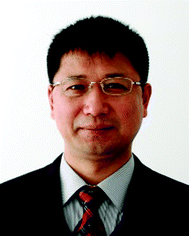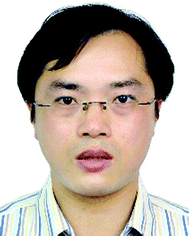Introduction to supra-amphiphiles
Feihe
Huang
 *a and
Xi
Zhang
*a and
Xi
Zhang
 *b
*b
aState Key Laboratory of Chemical Engineering, Center for Chemistry of High-Performance & Novel Materials, Department of Chemistry, Zhejiang University, Hangzhou 310027, P. R. China. E-mail: fhuang@zju.edu.cn
bDepartment of Chemistry, Tsinghua University, Beijing 100084, P. R. China. E-mail: xi@mail.tsinghua.edu.cn
 Xi Zhang | Xi Zhang is currently a Professor of Chemistry in the Department of Chemistry at Tsinghua University. His research focuses on molecular engineering of functional supramolecular systems. |
Supra-amphiphiles, as a combination of supramolecules and amphiphiles, have been actively explored recently. Distinguished from traditional amphiphiles, the hydrophilic and hydrophobic parts of supra-amphiphiles are connected by non-covalent interactions such as hydrogen bonding, hydrophilic–hydrophobic interactions, π–π stacking, charge-transfer interactions, electrostatic interactions and host–guest recognition. The dynamic and reversible nature of non-covalent interactions endows supra-amphiphiles with unique properties, typically stimuli-responsiveness and controllability. Compared with traditional covalently attached amphiphiles, the building blocks for supra-amphiphiles have higher diversity, for example, small molecules, macrocycles, polymers, inorganic nanoparticles, and organic/inorganic hybrids. Moreover, supra-amphiphiles also exhibit various self-assembly morphologies. These morphologies can be micelles, nanoparticles, vesicles, fibers, helixes, ribbons and sheets, and these assemblies have been used in ‘smart’ nanocarriers, chemical sensing/analysis, optical materials, supramolecular therapeutics, drug delivery and supramolecular photosensitizers. Clearly, the research field of supra-amphiphiles is not only an interest of chemists but also a research hotspot that attracts scientists in various fields of materials science, biology, pharmacology and other advanced sciences. To gain insight of self-assembly behaviour and broaden the application of supra-amphiphiles, there is no doubt that more and more scientists will devote to the development of supra-amphiphiles.
The reviews included in this web themed collection can not only provide a broad view of supra-amphiphiles but also represents the state-of-the-art studies going on currently in this field. It is without question that new research directions and branches will be investigated in the near future. We hope that the readers enjoy reading these excellent reviews and get some inspiration from this web themed collection. Finally, we want to give our deep acknowledgements to the authors of these reviews since their important contributions make this themed collection an excellent one.
| This journal is © the Partner Organisations 2020 |

